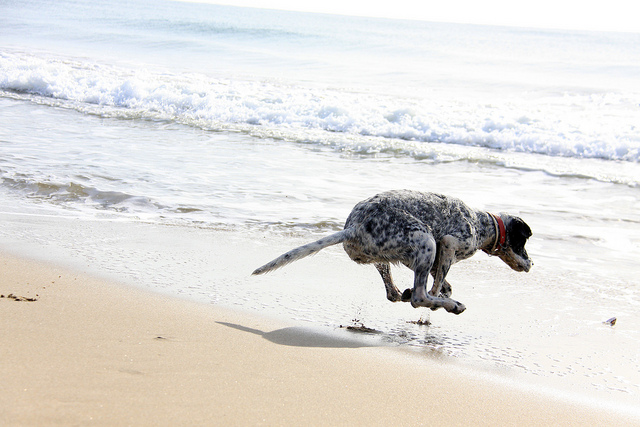
The Experiment
It's easy to forget that one can have the best prose in the world, but that's not enough to get your story accepted.
So
David Cameron decided to remind us.
As an experiment, Cameron copied a short story that had been published in The New Yorker--one of the top professional markets in North America (
The New Yorker was said to pay $7,750 per story in 2003) and submitted it to "a slew of literary journals, all of whom regularly grace the TOC of Best American Short Stories, Pushcart Prize, O’Henry, etcetera and etcetera".
The cover letter simply said that Cameron was "an unpublished writer deeply appreciative of their consideration".
Cameron also submitted the story back to The New Yorker.
Then he waited. Would one of the publications catch his duplicity and cry foul? Would any of the magazines accept the plagiarized story and, if so, how many?
Well, you've probably guess the outcome: none of the magazines accepted the story, not even The New Yorker!
David Cameron writes:
Dear reader, every single one of these journals rejected my poor New Yorker story with the same boilerplate “good luck placing your work elsewhere” auto-text that has put the lid on my own sorry submissions. Not a single personal pleasantry. What’s more, the timeframes tracked perfectly. For example, if the Beavercreek Fucknut Bulletin (not a real journal, but representative) generally takes thirty days to relegate my stuff to the recycle bin, then our New Yorker story ... fared no better.
Cameron thought his results might be a fluke so he tried again, this time with a story "by a rather celebrated youngish New Yorker author" but he had the same results; no one accepted the story.
What Was The Point?
What did David Cameron's experiment demonstrate? First and foremost it's a much needed reminder that the slush pile "is often just a cleanup chore relegated to overwhelmed readers, and ... rejections might mean nothing".
We've all been told that, but it's nice to have a demonstration of it every once in a while.
Still, I'm surprised no one caught onto the hoax. Cameron writes:
A part of me really wanted to be outed, to have some vigilant editor write back and say, “Nice try. Consider yourself blacklisted.” Or even to put me in the horribly awkward position of an acceptance!* That would mean there’s hope, that open submissions weren’t just, in so many cases, empty gestures.
To read more about David Cameron's audacious experiment, click here:
The New Yorker Rejects Itself: A Quasi-Scientific Analysis of Slush Piles.
The Steps Experiment
In the comments to Cameron's article someone mentioned
The Steps Experiment that Chuck Ross conducted in 1975.
[Chuck Ross] typed up twenty-one pages of a highly acclaimed book and sent it unsolicited to four publishers (Random House, Houghton Mifflin, Doubleday, and Harcourt Brace Jovanovich), claiming it was his own work. The work he chose for this experiment was Steps, by Jerzy Kosinski. It had won the National Book Award for Fiction in 1969 and by 1975 had sold over 400,000 copies. All four publishers rejected the work, including Random House, who was its original publisher.
I encourage you to read the entire article:
The Steps Experiment, 1975. Chuck Ross--who later went onto a successful career in journalism--later did another experiment and
submitted the script of Casablanca to over 200 movie agents.
Unaddressed Questions
Cameron didn't give us the names of the authors of the stories he sent out, and of course he didn't give us the names of the magazines which rejected them, but it would have been nice to have been told:
- How many magazines he sent the stories out to.
- How long he gave the magazines to respond before he wrote his article.
- How many replies he got back.
- The approximate pay rate of the magazines he sent the stories to (so readers could get a feel for the kind of markets they were rejected from).
Also, it would have been interesting to see the cover letter Cameron sent out with the stories. Though I'm sure it was well written, it would help rule out the objection that it was the cover letter that killed the editors' interest.
Afterthoughts
I did some research as I wrote this article and came across interesting articles I want to share.
Dan Baum's story of his short career as a staff writer at The New Yorker
A few days ago a friend asked how much I thought a staff reporter at Wired makes a year but I had no idea. Dan Baum's article answered my question (in 2006 about 90k) and gave a tantalizing peek into that life.
Dan Baum originally told his story as a series of tweets (2009) and then gathered them together on his website. Here's a link:
New Yorker Tweets.
By the way, if you would like to submit to
The New Yorker, send a PDF to
The New Yorker's online submission form. Deborah Treisman is the fiction editor.
Submissions may also be sent snail mail to the fiction department at The New Yorker, 4 Times Square, New York, NY 10036. (No simultaneous submissions)
How much can one get for a short story?
It depends, of course, on a number of factors: the market, the length of the story, and so on, but here are the numbers for a few markets:
How much does a short story earn in a magazine?
(
Duotrope used to be one of the only places a writer could get market information but now there is the
The Grinder.)
The following numbers are approximate:
New Yorker: $7,750 for 5,000 words (as of about 2003)
New England Review: $230
Asimov's Science Fiction: $427
Rolling Stone: $3.40 a word (as of about 2002)
Question: Have you ever been tempted to do a similar 'sting' on traditional publishers?
Other articles you might like:
-
Writing And The Fear Of Judgement
-
The Rules Of Romantic Comedy
-
5 Tips For Creating Memorable Character Names
Photo credit: "
More from Vivid" by
aussiegall under
Creative Commons Attribution 2.0.














